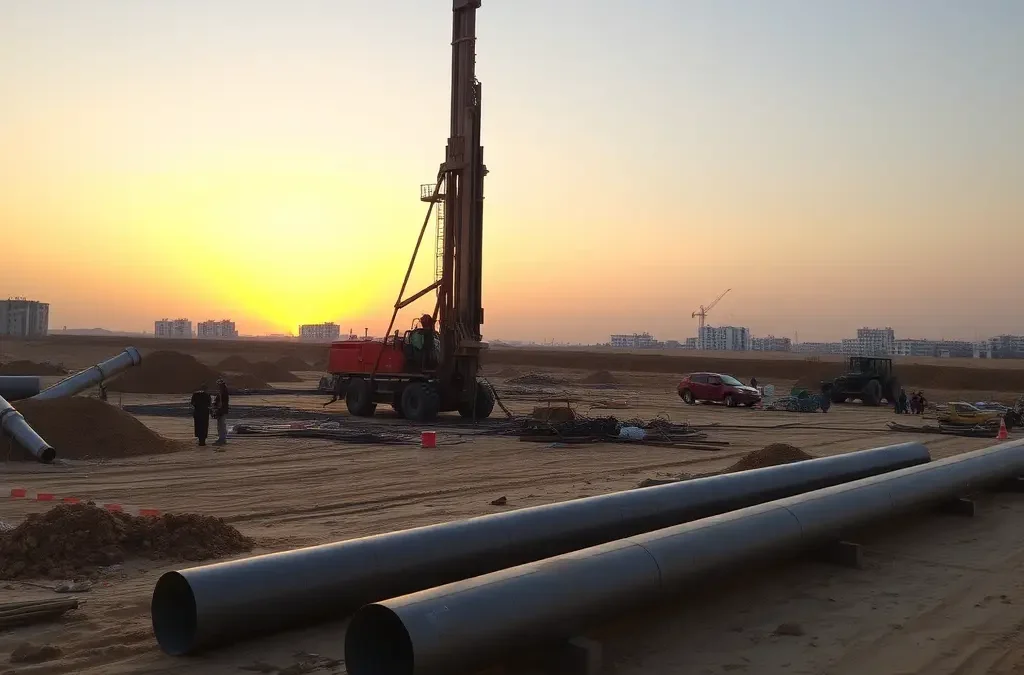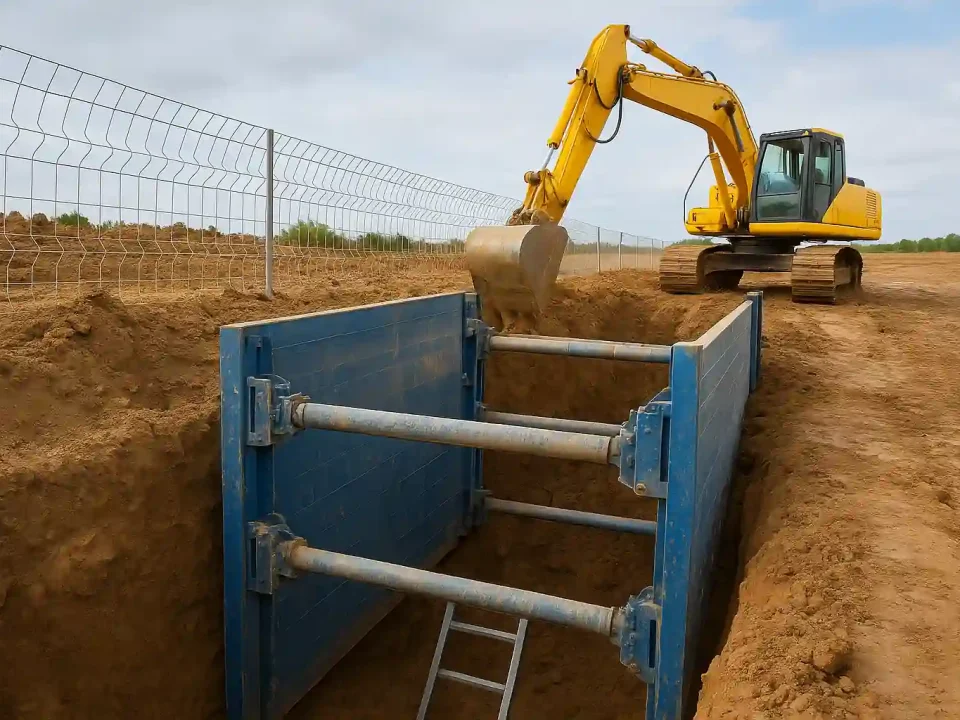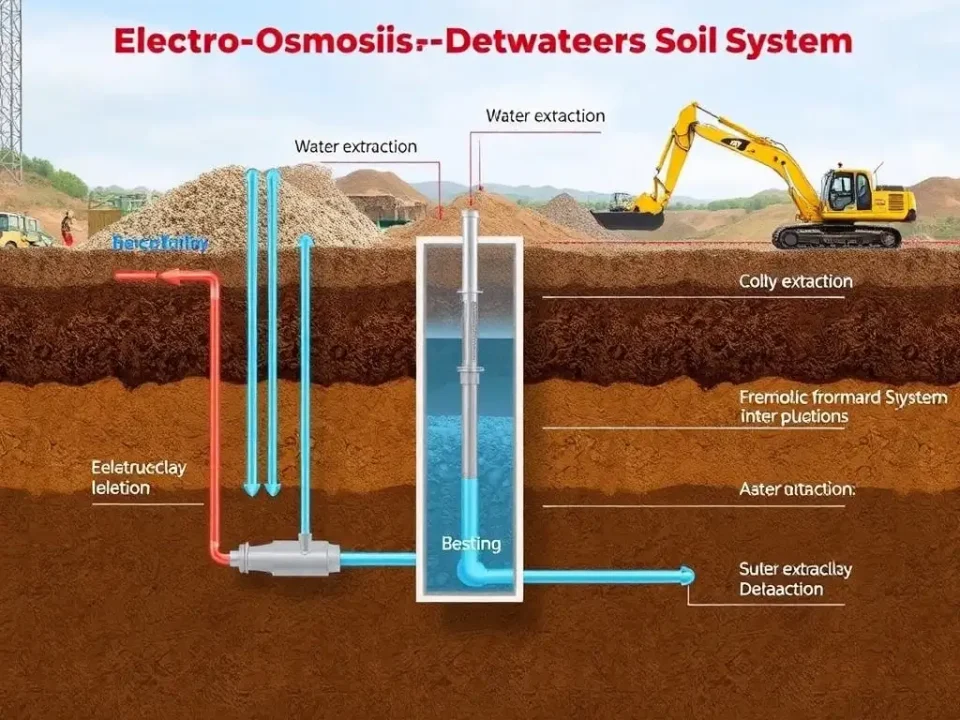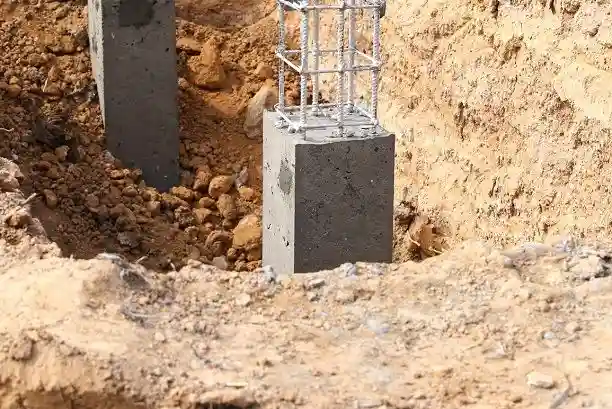
Understanding Dewatering System Types and Costs
April 29, 2025
Electro Osmosis Dewatering System for Soil Stabilization
September 2, 2025Cost to Install Helical Piers: What Drives the Price
Installing helical piers is an effective solution for stabilizing foundations in various construction projects. Understanding the cost to install helical piers is crucial for homeowners and builders alike, as it can significantly impact the overall budget. These innovative piers provide reliable support and durability, making them a popular choice for addressing soil settlement issues. In this article, we will explore the factors influencing the cost to install helical piers.
he Importance of Understanding the Cost to Install Helical Piers
When considering foundation repair or new construction, understanding the cost to install helical piers is essential. This knowledge helps homeowners and builders make informed decisions about budget allocation and project planning. Helical piers are often used in areas with unstable soil, providing a strong and stable foundation.
By grasping the various factors that influence the cost, such as soil conditions, depth requirements, and labor rates, stakeholders can better assess their options. Additionally, estimating these costs upfront allows for effective financial planning, ensuring that projects proceed smoothly without unexpected expenses. A clear understanding of the costs associated with helical piers contributes to the long-term success and safety of any structure.
What Are Helical Piers and Why Are They Used?
Helical piers, also known as screw piles, are deep foundation solutions designed to support structures by transferring their load to stable soil or bedrock. These piers consist of a steel shaft with one or more helical plates, which allow them to be screwed into the ground.
Helical piers are used primarily in situations where traditional foundations may fail due to poor soil conditions, such as expansive clay or unstable soils. They provide several advantages, including:
- Immediate Load-Bearing Capacity: Helical piers can bear loads immediately upon installation, making them ideal for urgent repairs.
- Minimal Disturbance: The installation process involves less excavation and soil disruption compared to traditional methods, which is beneficial for surrounding structures and landscaping.
- Versatility: They can be used in a variety of applications, from residential homes to commercial buildings and even bridges.
Understanding the cost to install helical piers is vital, as it allows property owners to weigh the benefits of this effective foundation solution against their budgetary constraints.
How Helical Piers Work
Helical piers operate through a straightforward yet effective installation process. These specialized foundation supports are designed to be mechanically screwed into the ground, effectively anchoring the structure to stable soil or bedrock. Here’s how they work:
- Installation Process: A hydraulic machine is used to rotate the helical piers into the ground. The helical plates on the shaft help to grip the soil and ensure stability as they are driven deep into the earth.
- Load Distribution: Once installed, the weight of the structure is transferred through the shaft of the pier to the helical plates, which distribute the load across a larger area of soil. This helps to minimize settlement and prevent structural damage.
- Immediate Support: Unlike traditional concrete foundations, helical piers provide immediate support upon installation. This is particularly beneficial for urgent repairs or new constructions that require a quick turnaround.
- Adaptability: Helical piers can be installed in various soil conditions, making them a versatile solution for different types of projects. They can also be adjusted in length and number to accommodate specific load requirements.
Understanding the cost to install helical piers is essential, as it reflects the complexity of the installation process and the materials used. This knowledge helps homeowners and builders make informed decisions about their foundation needs.
Key Factors That Influence the Cost to Install Helical Piers
When evaluating the cost to install helical piers, several key factors come into play. Understanding these factors can help property owners and builders budget appropriately for their foundation projects:
- Soil Conditions: The type and condition of the soil significantly affect installation costs. Rocky or highly compacted soils may require more effort and specialized equipment, increasing labor and material costs.
- Depth and Number of Piers: The required depth of the helical piers and the number needed for adequate support directly influence the overall cost. Deeper installations or additional piers will raise expenses.
- Labor Costs: The complexity of the installation process can vary based on local labor rates and the experience of the crew. Skilled labor may cost more but results in better quality and efficiency.
- Accessibility: The site’s accessibility plays a crucial role in determining costs. Difficult-to-reach locations may require additional equipment or labor, thereby increasing installation costs.
- Permits and Inspections: Local regulations may require permits or inspections, which can add to the overall cost. It’s essential to factor in these fees when budgeting for helical pier installation.
- Additional Repairs: If the foundation has existing damage that needs addressing before installation, these repair costs should also be considered in the overall budget.
By considering these factors, stakeholders can gain a clearer picture of the cost to install helical piers and make informed decisions regarding their foundation needs.
Helical Piers Cost vs Concrete Footings
| Factor | Helical Piers | Concrete Footings |
| Installation Cost | Generally higher per unit | Typically lower per unit |
| Labor Costs | May require specialized labor | Standard labor requirements |
| Time to Install | Faster installation | Slower due to curing time |
| Soil Conditions | Effective in poor soil | Requires stable soil |
| Immediate Load Capacity | Yes, can bear loads immediately | No, requires curing time |
| Excavation Needs | Minimal excavation required | Significant excavation needed |
| Long-term Durability | High, resistant to settlement | Varies based on soil and design |
| Flexibility in Design | Highly adaptable | Limited by soil conditions |
This table provides a comparison between the costs and features of helical piers and concrete footings, highlighting key differences that can influence project decisions.
Cost to Install Helical Piers for Different Project Types
The cost to install helical piers varies significantly based on the type of project:
- Residential Homes: Installing helical piers for residential foundations typically ranges from $1,000 to $3,000 per pier, depending on soil conditions and depth requirements.
- Commercial Buildings: For commercial projects, the costs can be higher, often between $2,000 to $5,000 per pier, reflecting the need for greater load-bearing capacity and potential complexity in installation.
- Decks, Porches, and Small Structures: For smaller structures, such as decks and porches, the cost may range from $1,000 to $2,500 per pier, making it a cost-effective solution for stabilizing lightweight structures.
- Screw Pile Foundation Cost: The overall cost for screw pile foundations generally aligns with helical piers, with similar pricing structures based on project specifics.
- Helical Piers Foundation Repair Cost: Repairing existing foundations with helical piers can range from $3,000 to $10,000, depending on the extent of damage and the number of piers needed.
- Helical Piers for Swimming Pools Cost: Installing helical piers for pool foundations can cost between $1,500 to $4,000 per pier, ensuring stability in often unstable soil conditions.
- Helical Piles for House Foundation Cost: The cost for helical piles specifically for house foundations typically falls between $1,500 to $4,000 per pile, ensuring a robust support system.
Understanding these costs helps in budgeting and planning for various construction and repair projects involving helical piers.
Cost Saving Tips Without Compromising Quality
- Get Multiple Quotes: Compare prices from several contractors to ensure competitive rates and quality service.
- Choose Local Contractors: Hiring local experts can reduce travel costs and support the community.
- Plan Ahead: Schedule installations during off-peak seasons to take advantage of lower labor rates.
- Bundle Projects: If you have multiple foundation needs, consider bundling them to negotiate a better overall price.
- Research DIY Options: Explore aspects of the project you might handle yourself, like site preparation, to save on labor costs.
- Invest in Quality Materials: While it may seem counterintuitive, investing in higher-quality materials can reduce long-term repair costs.
- Consider Alternative Solutions: Evaluate whether helical piers are the best option for your situation; sometimes, traditional methods may be more cost-effective.
- Communicate Clearly: Provide detailed project requirements to avoid misunderstandings and additional costs later on.
Implementing these tips can help manage expenses while ensuring the quality and effectiveness of your helical pier installation.
Understanding Dewatering System Types and Costs.
Strengthening Your Foundations with Aramenco: The Best in Kuwait!
At Aramenco , we take pride in being Kuwait’s leading foundation reinforcement company, dedicated to providing unparalleled support for your construction projects. Our team of experts utilizes advanced techniques and high-quality materials to ensure that your buildings stand strong for years to come. Whether it’s residential, commercial, or industrial structures, we tailor our services to meet your specific needs, ensuring safety and stability. With years of experience and a commitment to excellence, Aramenco is your trusted partner in foundation reinforcement. Choose us for reliable solutions that not only enhance structural integrity but also provide peace of mind for your investments. Strengthen your future with Aramco today!
FAQ
What is the average cost to install a helical pier?
The cost typically ranges from $1,500 to $3,000 per pier, depending on depth, soil conditions, and load requirements.
How many helical piers do I need for my project?
It depends on the size and weight of the structure, as well as the soil bearing capacity. A structural engineer usually determines the exact number.
Does soil testing add to the overall cost?
Yes, geotechnical investigations or soil testing may cost between $500 to $2,000, but they’re essential for accurate planning.
Is installing helical piers more expensive than concrete footings?
Not always. While initial material costs may be higher, helical piers often reduce labor time and excavation costs, especially in poor soil conditions.
Do contractors offer financing or payment plans?
Many reputable contractors provide financing options or staged payment plans to help manage costs.
How long does it take to install helical piers?
On average, 1–3 days depending on the number of piers and job site complexity.
Can weather affect the cost of installation?
Yes. Wet or frozen ground can complicate access and may require additional equipment, raising the price.




